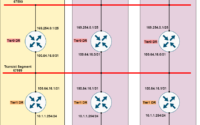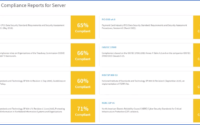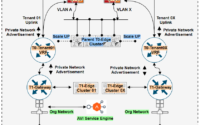Features and benefits of Cisco ACI
Cisco ACI is an SDN solution that integrates software and hardware with various features and benefits to the end-user. Furthermore, the switching hardware platform for ACI is based on the Cisco Nexus 9000 and the SDN controller is based on the Cisco UCS C-series platform.
Using this blog, I am trying to uncover you some of the key industry use cases, key features, and benefits of Cisco ACI
One Network For All Workloads
Undoubtedly this is one of the key benefits, it should be noted that ACI provides an automated & unified datacenter network policy for containers, virtual & physical machines
Multi-Hypervisor Integration
This allows managing & configuring end to end switching infrastructure (physical and virtual) from a central controller. i.e ACI support integration of VMware vCenter, Microsoft HyperV and KVM.
40G, 100G & 400G fabric
ACI switching fabric supports all types of connectivity from 100MB to 1G, 10G, 25G 40G, 100G & 400G.
Enhanced Fabric Performance
Better application flow completion time with flowlet switching and ECMP
Single Pane of Management
Through APIC controller GUI, Rest API or CLI, it supports centralized policy configuration, fabric management, troubleshooting, telemetry & documentation.
Pervasive Gateway & Workload Mobility
ACI provides gateway anywhere across the fabric, which also results in seamless VM movements across the fabric.
Multi-Tenancy
Most of the other vendor solutions do multi-tenancy with VRF constructs. However, with ACI it provides built-in multi-tenancy features to logically segment network. Eg: You can have production and UAT traffic segregated using separate tenants.
Embedded Fabric Security
ACI operates using the whitelist policy model, i.e until explicitly allows traffics, is not permitted between different endpoint groups.
Health Score Visibility
Centralized packet counters and health score reporting for all the fabric nodes. This allows quick inventory management and device-specific troubleshooting
L4-L7 Service graphing
This is ideal for someone who is very good at scripting and looking for doing full stack automation. The solution can be integrated with leading firewall and load-balancer vendor solutions to allow centralized policy management.
Consistent Network & Security Policy
ACI provides consistent policy across multiple PODs, sites, co-location facilities, and also to the public clouds.
Simplified DC Interconnect
ACI allows extending L2\L3 across the multiple DC’s natively using VxLAN.
Seamless integration of underlay and overlay
ACI offers zero-touch provisioning of the fabric with integrated underlay and overlay.
Micro-segmentation
Micro-Segmentation for physical and virtual workloads. For instance, ACI, allows grouping and segmentation of application to prevent not required east-west traffic and in addition L4-L7 service insertion wherever required.
Active-Active DC
ACI support integrated active-active DC solution using multi-pod. therefore allows stretching L2\L3 and furthermore clustering L4-l7 solution across the sites.
ACI Anywhere
with solutions such as Multipod, Multi-site, vPOD, remote-leaf, you can extend ACI policy to any data center and similarly to the public clouds such as AWS, Azure, and GCP
Programmable Fabric
ACI infrastructure fully supports operating, manage, and monitor with rest API. Clearly this helps in integrating with various solutions such as ServiceNow, vRealize, CWOM, etc
Admin friendly Solution
Above All, ACI could be operated and managed using NX-OS commands, rest API calls, and graphical user interface. This allows a flexible operational model
In conclusion, listed above there are a good number of key features & benefits if you consider moving to an ACI solution. However, considering there are a lot of vendors out there offering SDN, it needs to be carefully validated against your current use cases before making the decision. In particular, this could include migration of your legacy infrastructure and future roadmaps such as cloud strategy, etc
Finally, please don’t miss reading the related Post: Software-Defined and Traditional Network – https://www.networkbachelor.com/software-defined-network/


